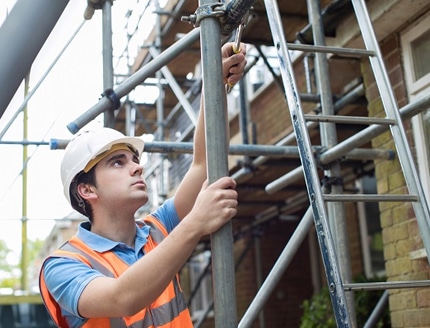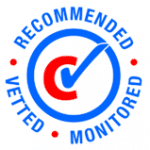Scaffolding Inspection
Designed to allow easy access for maintenance, scaffolding must be regularly checked by a professional to ensure safety. Initial inspections, regular on-site inspections, are available, providing extensive support for all your scaffolding needs. We have experienced people trained in advanced scaffold inspection. We provide a professional service and use only the high quality scafftag system. We inspect the site for any hazards and safety precautions before and after we dismantle your scaffold systems.
We understand that you’ll want your scaffold up and running as long as you need it, so we carry out regular inspections and, where necessary, maintenance. Our safety record is excellent and there’s always an on-site health and safety representative when we work on your site. We have a friendly and professional team that is dedicated to helping you with all of your scaffolding needs.
We Are Also Available to Offer Scaffolding Related Advice

Scaffolding Inspection Basics
Ace Scaffolding can conduct an independent statutory inspection, and we run on-site scaffold monitoring services in line with regulation 12(7) of the 2005 Work at Height Regulations. Ace Scaffolding provides independent scaffolding inspections on behalf of scaffolding customers throughout the Haywards Heath area.
Users should confirm the safety features of the structure and make sure it is ready for operations. Our independent inspectors advise you professionally and impartially on scaffolding standards.
Why Does Scaffolding Have to Be Inspected?
Scaffolding is an access form that’s used on most construction sites in various ways. Scaffolding with large frames are prominent on construction sites that utilise them. For renovation work, it could be the first sign that a building project has started from the outside. Working at heights can be risky. In 2017/18, 35 fatal falls from height were recorded. This statistic doesn’t just affect people working directly at heights, but anyone working near someone else who has to work at height. HSE reports that falls from heights are responsible for 8% of non-fatal RIDDOR injuries. HSE Reports is responsible for tracking all companies (including directors) whose scaffolds fall below the necessary standards.
When Should You Inspect Scaffolding?
To comply with the 2005 Working at Heights Standard, scaffolding used for construction work must undergo inspection prior to first use and thereafter once every 7 days until it is taken down. Due to its extensive exposure to the elements, it is vital you confirm that your scaffolding is in safe and sound condition at all times. The scaffolding you use must be properly inspected, and it is your responsibility to ensure this has been done.
Who is Qualified to Inspect Scaffolding?
The HSE rules that scaffold inspections should be performed by a competent person who is knowledgeable and has been trained to perform the inspection for the type and complexity of the scaffold. To be considered competent enough, the CISRS (Construction Industry Scaffolders Record Scheme) qualification is one every scaffold inspector should hold. The qualification is a benchmark which shows that an individual has the necessary level of knowledge, understanding, and competence to work as a scaffold inspector.
However, someone who has received training in inspecting a specific type of scaffold system from an associated supplier or manufacturer can inspect the scaffold structure based on the experience and expertise. Individuals who complete a professional course can be certified to conduct inspections on basic scaffolding systems. The scaffolding inspection course educates trainees on the proper methods of erecting and dismantling scaffolds, as well as the safe uses of the equipment involved.
A written report is issued following each inspection. This report must remain on site and be available for review until the work is completed. After completion of the construction work, you should keep the reports at an office location for, at least, three months. A thorough scaffold inspection report should cover any situations or deficiencies that could present a risk to health and safety. It should include any actions taken, despite the time taken to address the issues.
This can help highlight a recurring problem. The scaffolding report should have this information:
- The name and address of the individual or organisation for whom the inspection was conducted.
- The inspector’s name and position.
- The place, date and time.
- A report on the worksite or the scaffolding inspection site.
- As part of the inspection process, any defect or other physical problem that could endanger a person’s health or safety and details on how to fix them must be revealed on the report. Additional information to ensure on-site safety.
- If you’re looking for more information on scaffolding inspections, Ace Scaffolding Haywards Heath is happy to help.
- We carry out independent scaffolding inspections, monitor scaffolding activities and audits. We provide a range of training programmes for scaffold inspectors at all levels.
Our Guarantee
- Over Six Years Experience
- Unrivaled Experience
- An Exceptional Service
- Unbeatable Value For Money
- Industry-approved Scaffolders
- A Full Range of scaffolding Services
- Professional, Reliable and Diligent
- 100% Safety and Satisfaction
How Often Should Scaffolding Be Inspected?
A work platform like a scaffold can only be used if it has been inspected within the last 7 days. Once the scaffolding is installed, the inspector conducts a preliminary inspection. The inspection is recorded as a handover certificate. A completed safety inspection signifies that you can use your scaffold for work. Weekly inspections throughout the duration of the project are required to ensure that the scaffolding is in good working condition.

No one should use the scaffolding if it has not been inspected for over 7 days. If the scaffolding undergoes a change between inspections, you may need to examine it ahead of schedule. Inspections are necessary in unexpected situations. This includes storms, as scaffolding can suffer substantial damage from high winds.
This can be the case if something were to affect the scaffolding; for example, a machine or a vehicle. Fall prevention is a priority, this inspection system should apply to any work platform with a fall risk exceeding 2 metres. A complete scaffold inspection involves an examination of various components including the crash barriers, bracing, and foundation. Errors in the framework, signs of damage or unauthorised changes are checked and corrected as soon as possible.
When Should You Inspect a Harness?
There are three recommended inspection levels:
Pre-Use Testing
Users will perform this inspection before each shift to ensure that there are no defects on the surface of the scaffolding. If you notice any discrepancies, you should share that information with your employer.
Detailed Inspection
There should be an inspection on the official record at least every 6 months. However, for frequently used equipment, we recommend increasing this value to at least every three months, especially if the equipment is used in difficult environments such as scaffolding demolition, steel masts/towers with edges, and steel assembly areas.
Interim Inspection
These inspections are detailed and documented supplements to pre-use inspections and detailed inspections. Interim inspections could require a detailed check in a case where the employer’s risk assessment unearths a potential risk which could cause considerable deterioration and endanger the lanyard before the next scheduled detailed inspection.
The need for and frequency of interim inspections depends on usage. Appropriate examples include hazards arising from harsh environments involving paints, chemicals or sandblasting. Risks from acid or alkaline environments where the nature of the substance from which the compound is made cannot be determined are appropriate situations that call for periodic interim inspections.
Scaffolding Types

Who is Responsible for Inspecting Scaffolding?
It is the responsibility of the employer, according to the Health and Safety Regulations of 1999, to evaluate threats to health and safety of the workers as well as the general public.
The Construction Regulation (Design and Administration) of 2015 states that commercial project owners must make sure the work activities are not harmful to the health and safety of their employees and the general public. For domestic clients, the contractor, builder, or scaffolder is responsible for health and safety on-site.
Legal Requirements for Scaffold Inspection
- Scaffolding must be checked before use and confirmed in the initial test report or in a handover protocol. Scaffolding should be carefully examined on a weekly basis.
- It is necessary to check scaffolding on a regular basis, eliminating the risk of damage from alterations and adverse weather, to ensure that the structure is still safe and sound.
- Inspection reports are best kept in a format that can be transferred, with little effort, into printable form and protected against tampering.
- The person performing an inspection must, before the end of the working period in which the inspection is completed, prepare a report to be communicated to the client/employer within 24 hours. The employer will need to keep a copy of the inspection report on the job site until the work is completed, and then keep a copy in for another 3 months.
We Are Also Available to Offer Scaffolding Related Advice
What Information Will You Find in an Inspection Report?
- The address and the name of the individual on whose behalf the exercise was conducted.
- The address where the inspection took place.
- A description check of the scaffold.
- The date and time of the inspection exercise.
- Information on any factors that can increase safety or health risks on site.
- Steps taken to resolve issues identified during the inspection exercise.
- Details about any move that is deemed important.
- The name and position of the person who takes charge of the report.
Recommendations by NASC
NASC recommendations
- A CISRS cardholder will be considered qualified to conduct scaffold inspections if an employer is able to prove that they have the experience and expertise covered in Parts 1 & 2 of the CISRS course modules.
- CISRS aims to deliver top quality courses, the CAP 609 General Information Booklet Appendix A-F pages 37-52 is the best place to get CISRS course content. For a person to be certified as a scaffold inspector, he/she must go through the CISRS Basic Scaffold Inspection Training Scheme course.
- An individual has just successfully finished the CISRS Advanced Scaffold Inspection Training Scheme, which is an industry-specific training course that provides training for carrying out complex scaffold inspections to a high standard. Individuals who have completed this qualification can inspect complex scaffold systems.
- Experienced scaffolding inspectors, managers, and supervisors are those who should partake in this course, as they have the responsibility of commissioning, inspecting and handing over scaffolds including filing inspection reports in accordance with Work at Height Regulations of 2005.
- A CISRS SITS qualification is valid for a 5-year period. After the expiration of five years, each delegate will need to renew their CISRS SITS card by re-sitting the course. This is the only way to remain qualified inspectors.T
- he first step in scaffold inspection is familiarizing yourself with the system you will be inspecting.
- You should find out what kinds of scaffolds are in use and how to inspect them properly. Interested parties can get this information from the manufacturer, the supplier, or CISRS-approved training providers.
We Are Also Available to Offer Scaffolding Related Advice
Our Emergency and Monitoring Scaffolding Inspections
We carry out scheduled scaffolding inspections and can respond to emergency inspection calls. We include digital photographs and a written report in our deliverables.
Frequently asked questions
Should Scaffolds be inspected every day?
Can Scaffolding be Used in the Rain?
Are Scaffolding Tags Legally Required?
How Many Days does a scaffold tag stay valid after an inspection?
What is the Meaning of a Yellow Scaffold Tag?
Is a License Needed Before a Scaffold Gets Erected?
What Qualifications are needed for scaffolding?
How Long Should Scaffolding Record be on Site?
How Long before One Becomes a Qualified Scaffolder?
Is a Scaffold Handover Certificate Legally Required?
How frequently should equipment for working at Height be inspected?
What is a Standard in Scaffolding?
Get in Touch With us for Your Scaffolding Hire Quotes






